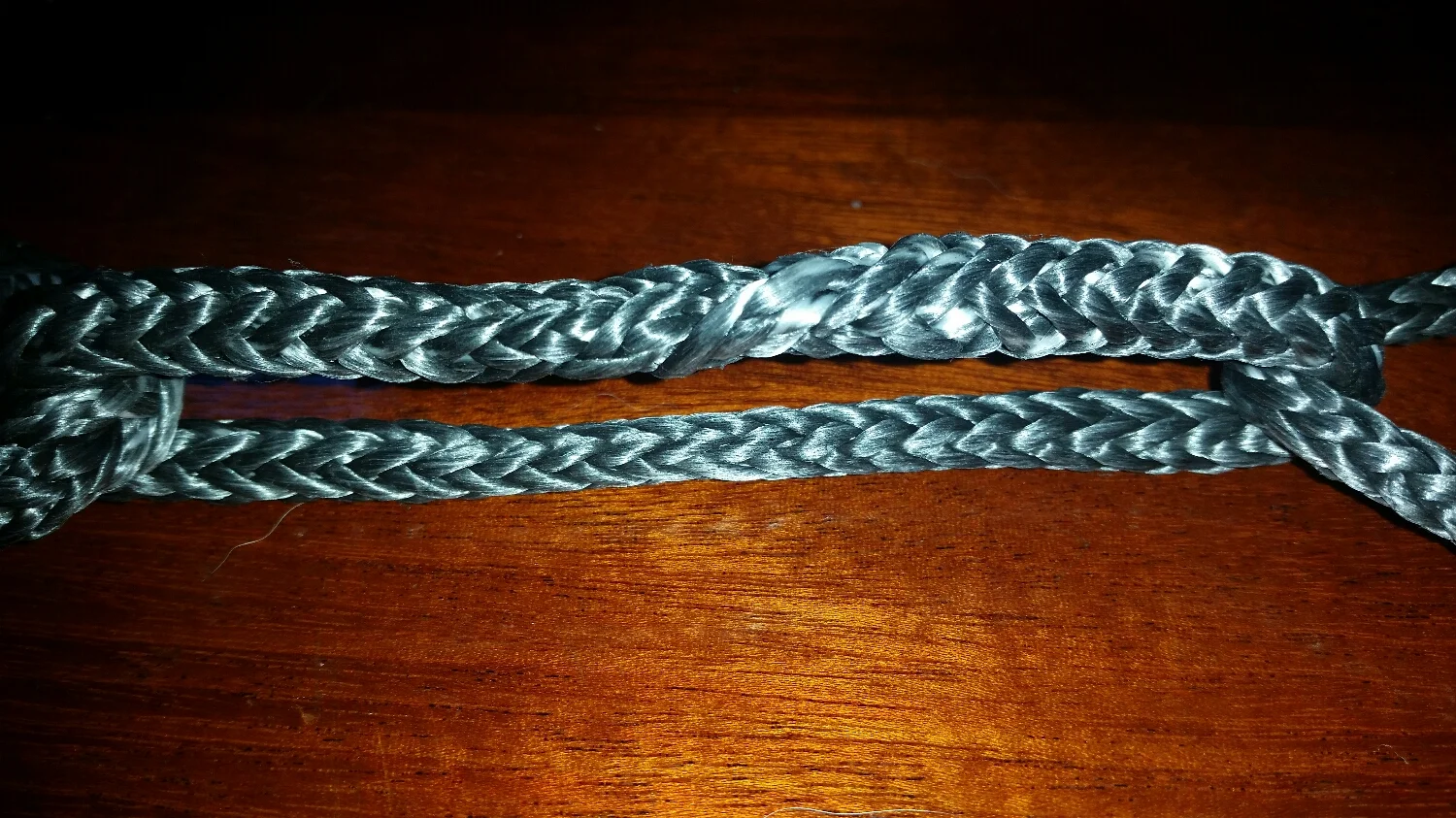The backstay was the first stay that I fabricated for the Islander 36. The owner wanted to reuse his older turnbuckles but the cost to replace the swaged top to a toggle and replace the corroded lower toggle with a new one was astronomical! Each component cost around $250, and we need 16, adding a little more than $4,000 to the cost of re-rigging. As you can imagine the decision was made to not repair the old turnbuckles and instead go with deadeyes for the shrouds.
The backstay currently has a new Hayn turnbuckle which we shall be reusing. Since we can retain the turnbuckle for the backstay, we won't need to create a backstay adjuster for minor adjustments before going sailing.
The backstay is responsible for controlling headstay tension while sailing. As a result, the tension in the backstay is often adjusted. Having to rig up the deadeye tensioning system every time you wanted to add tension or ease it a bit would be quite tedious. Retaining the turnbuckle will allow the owner to quickly increase or decrease tension in the backstay with only a few simple tools.
Since the majority of the work will be performed by the turnbuckle, we don't need an extensive pulley system for the lashings. The lashings will connect the backstay to the deadeye which is attached to the turnbuckle. To add tension, simply loosen the turnbuckle all the way, tighten the lashings by hand and tie them off, then tighten the turnbuckle. If the turnbuckle becomes two-blocked, simply repeat the process.
Thanks to the mechanical advantage of the inclined plane in a turnbuckle (the screws), tension can be added to the backstay without relying on a complex pulley system.
The deadeye was made using a dyneema grommet with a flat seizing knot tied in the middle. This will hold the thimbles in place for the life of the deadeye and provide a proper turning block for the lashings.
The backstay was cut to length and then spliced together using mobius brummel eye splices. The length was cut before the splices were put in, as the stay will shrink during the splicing process. As the weave is opened up to bury the tail, the stay will contract. Once the stay is loaded, this contraction will be removed in the form of constructional stretch. If you splice one end of the stay and then mark and measure the other end, you will end up with a stay that is a few inches longer than expected. By measuring everything first, you can properly estimate the final length of the stay after all the constructional stretch and initial creep is removed.
The 12 strands were selected and removed from the tail at regular intervals. I needed to bury 20 inches of tail, but decided to bury 36 inches, as the extra bury is extra security. Should a splice in the backstay fail, the mast will come crashing forward! These extra inches are simply added security for the stays structural integrity.
The additional bury allows for a full 20 inches of bury at the ropes original size and weave. The last 16 inches were thinned at regular intervals producing a very sleek and smooth taper. If the tail were to end in a blunt cut, the splice would hold with plenty of strength but the stay would fail prematurely. The sharp transition from buried tail to no buried tail would become a source of stress on the stays fibers which would become the point of future failure. By tapering the stay slowly and gradually, this source of stress is eliminated and will prevent any premature failure of the stay.
Once these pieces of the tail are pulled out of the weave and cut off, this part of the tail can be milked back into the stay. With the thimble in place, the stay is now completed and ready to be installed on the yacht as the new backstay.













